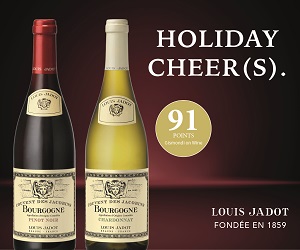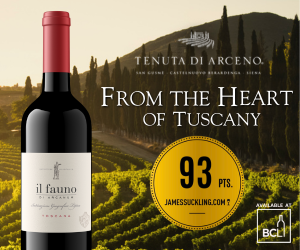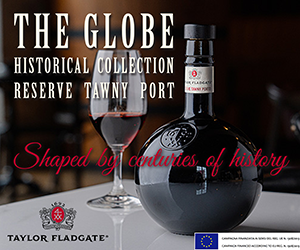BERNKASTEL/MOSEL, GERMANY -- The 2006 harvest was the earliest and fastest that we have ever seen.
We were in a desperate race against the weather and the rapid onset of botrytis. After a very hot June and July, the month of August was cooler, with a good amount of rainfall. The rain was much needed -- especially for the very thirsty younger vines -- but it also set the stage for a ferocious fungal attack. By the end of a rather warm September, average must weights were already quite high and botrytis was taking off.
At Dr. Loosen, in the Mosel, we started the harvest in the last week of September, about three weeks earlier than normal. We were the first ones out there, but asked ourselves, "Why wait?" The ripeness was already there and botrytis was spreading quickly, so we decided to jump in to get as much healthy, non-botrytis fruit as possible. We started, as we often do, by taking out only the fully affected botrytis clusters, leaving the clean fruit to ripen longer. But the clean fruit was also quite ripe and ready to pick, so we took on an additional 20 people in our harvest crew (for a total of 50 -- our largest crew ever) and continued picking as fast as we could.
In a normal year, the harvest at Dr. Loosen can take as long as eight weeks. In 2006, we did it in less than four weeks! But we think the extra-long days and the added expense of more pickers brought us good success in our race against the nastier side of Mother Nature. Through careful, though frenzied, selection at the beginning of the harvest, we were able to produce our normal range of non-botrytis, single-vineyard wines (Kabinett, Spätlese and Auslese) amid the abundance
of noble sweet wines. From the Ürziger Würzgarten vineyard, however, we will have a very small amount of Kabinett, which will be restricted to just a few markets. Most of the fruit in that sunny, south-facing site was so ripe by the time we got to it that we harvested very little under the Auslese ripeness level (85° Oechsle; 20.4 Brix). We want our wines to be richer and more intense than the legal minimums require, so we often declassify wines from "legal" Auslese to Spätlese and from Spätlese to Kabinett. But to declassify a hefty Auslese to Kabinett just doesn't work -- the wine is too big and rich, no longer showing the lightness and delicate structure that is the signature of true Kabinett.
Sunny weather at the beginning of October helped to slow the spread of botrytis, but a couple of days of rain brought a renewed attack and soon we were harvesting nothing but botrytis-affected grapes. The weather cleared again, however, and the botrytis dried out, shriveling the grapes without turning to bad rot. This is the ideal situation for harvesting pure dessert wines -- similar to the 2005 vintage, only much more widespread. Normally, we painstakingly cut the healthy fruit from the botrytis fruit, and then further separate the botrytis grapes into three categories: Gold Capsule Auslese, Beerenauslese (BA) and Trockenbeerenauslese (TBA). But, by the end of the harvest, we were picking entire parcels of BA as if they were normal grapes, without need to do further selection. Nature had done the selection for us!
It was an unusual year, but the wines have turned out beautifully. The enormous ripeness and concentration of fruit is superbly balanced by an extremely vibrant acidity. Even the big, ultra-rich botrytis wines have an elegant, nimble structure. It seems that the rapid development of botrytis, and our rapid response in picking, didn't give the acidity a chance to drop. In fact, in many cases the acidity was actually increased through the concentrating effect of botrytis. We harvested more BA than we've ever seen before and quite a lot of it is from outside what we consider to be the grand cru parts of our best vineyards. So, in addition to the grand cru single-vineyard BAs, with the highest must weights, we will also have a good quantity of "smaller" BA that will be bottled without vineyard designation and sold at a much lower price. For anyone who's ever wondered about all the fuss over botrytis, the 2006 vintage will be your best, most affordable opportunity to discover these extraordinary wines.
At J.L. Wolf, our estate down south in the Pfalz region, the harvest is always faster than in the Mosel. The vineyards are much flatter and the work can proceed much more quickly. Here, we had most of the harvest completed before the rain arrived in October. The quality is excellent again this year, but the quantities are rather small due a devastating hail storm that hit the vineyards of Wachenheim and Forst during flowering. The vines recovered remarkably well, however, and further flowering produced a small amount of very fine, very concentrated fruit. While quantities of the single-vineyard, estate-grown J.L. Wolf Rieslings from 2006 will be quite low, we will have good supply of the range of Villa Wolf varietal wines. The Villa Wolf value line is made from contracted grapes with a focus on pure varietal and regional character. In addition to Villa Wolf Pinot Gris, there is Gewürztraminer, Riesling, Pinot Noir and Rosé of Pinot Noir. And, with 2006, we have added a very nice, dry Silvaner, another of the authentic and very traditional grapes of the Pfalz.
Overall, it was a very small harvest in both regions. But the quality of the wines is exceptional, thanks to some quick thinking, fast action and a lot of man-hours in the vineyards. This vintage will also require quick action in the marketplace as availability of the estate-grown wines will be limited. We are doing everything we can to distribute the wine equitably among our loyal and much-appreciated customers, but our best advice is don't delay when the wines are released. Just ask yourself the same question we did, "Why wait?"
Ernst Loosen

 quicksearch
quicksearch





